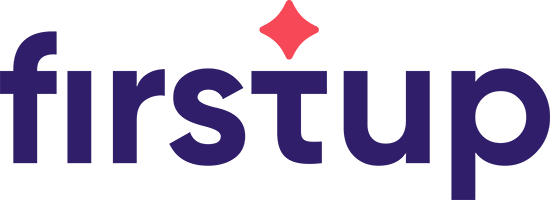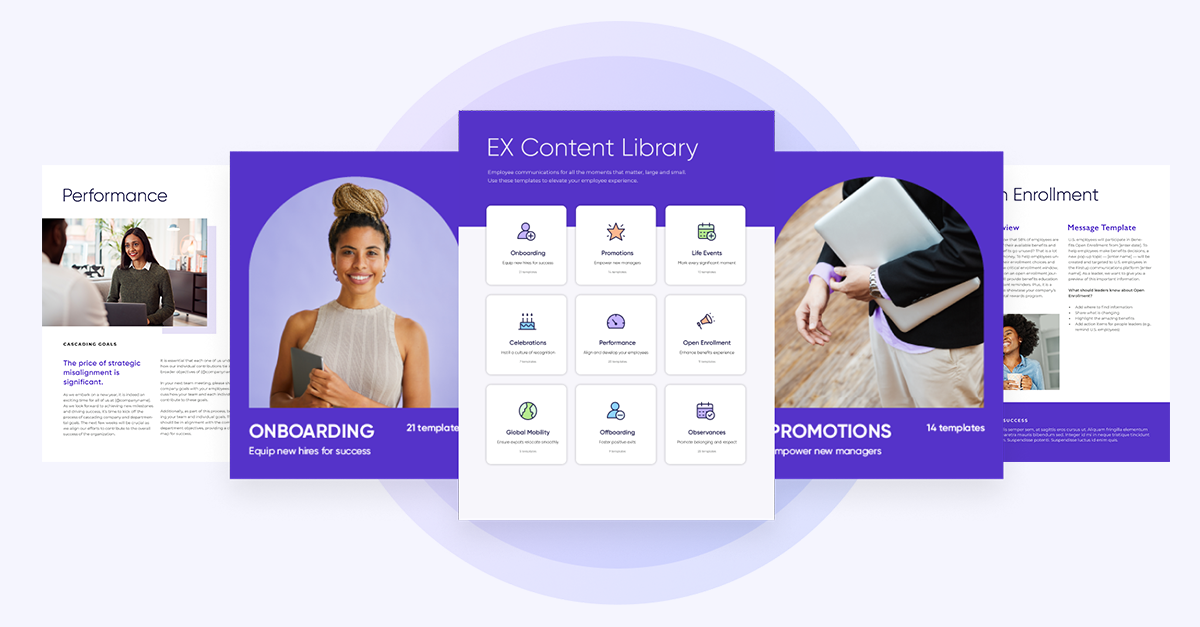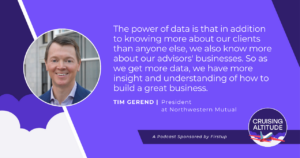Costs related to employees—keeping them well-trained, well informed, and happy—represent a huge chunk of your company’s budget. And, in the current era of digital transformation, the pressures related to those costs are only intensifying. That makes your ability to lead human capital management critical to the bottom line.
In order to improve human capital management, HR needs to prioritize the employee experience and become drivers of organizational effectiveness and business strategy. Here are eight key tips to keep in mind.
#1: Develop an internal communications strategy.
Reaching every employee with relevant and important communications is always crucial. Employees who feel well-informed about what’s going on at work perform better and are actually more productive—by between 20 and 25 percent. During times of change and transition, an effective internal communications strategy improves human capital management; if people understand what’s going on, they will transition more smoothly and securely, which will result in a more positive work environment.
#2: Invest in a workforce communications platform.
Using a workforce communications platform bolsters employee engagement because companies can provide the relevant content to help their people thrive. It provides an efficient way to keep communications flowing to employees, and helps you meet them on their terms (remember different people prefer consuming information on different formats, such as email, intranet, branded apps, etc).
Additionally, when selecting which workforce communications platform to invest it, it’s important to consider one that can be accessed on mobile devices: 85% of Americans currently read news on their smartphones.
#3: Embrace AI and machine learning.
A recent study found 72% of employees believe that some jobs will become fully automated within 10 years. By embracing AI and machine learning, human capital management could be greatly improved.
For example, AI could eliminate human bias, and machine learning could train new hires—something that is known to cost organizations considerable time and resources. Automation could also lessen the burden of tedious administrative tasks.
#4: Listen to employees.
Whenever your company implements a new policy, employees need a chance to express their opinions. This process could be as simple as providing a question and answer session, during which employees can submit their opinions.
Listening to employees in this fashion would send a strong message that the organization cares about what they think, and this can help boost morale. It also offers gives you a chance to see if employees are confused about changes—well before any such issues affect implementation. Two-way communication is the heartbeat of great human capital management.
#5: Use technology to measure employee engagement.
With the right technology tools, you can measure both employee engagement and internal communications. Employee engagement tends to be measured primarily, if not exclusively, through once-a-year employee engagement surveys. Deloitte found that two out of three companies still conduct those surveys.
However, those annual surveys often produce results that can be difficult to understand, do not account for recent changes (because things are always changing far faster than a once-a-year survey can keep pace with), and are often costly.
Most workforce communications platforms have built-in analytics tools to measure employee engagement, which is a new frontier for improving human capital management. HR and internal communicators can track their content performance and track to strategic business KPIs.
#6: Focus on the employee experience.
Learn how your employees interact with your company each day. With this insight, HR can better understand how to improve the employees’ work experiences.
Deloitte’s Human Capital Consulting Director Burt Rea rightly called this a “practical concept.” By investigating the ground-level employee experience (EX), you can go beyond such fun but relatively limited perks as free food or temporary programs and instead address the entire lifecycle of employees, from how they’re hired to how they interact with leadership as they advance up the ladder. This way, you can design a meaningful approach to human capital management that provides lasting value.
#7: Align human capital management goals with overall business objectives.
Human capital management and business success work in tandem— one can’t exist without the other. That’s because companies need people and people want (and like) to work at successful companies. The main purpose behind achieving such alignment is so that human capital management efforts can solve business challenges. Talk to your executive team regularly and make sure your human capital management KPIs align with larger business KPIs.
#8: Become more data-driven.
Companies can gain tremendous insights about their employees (and their motivations) with data analytics that otherwise would be impossible to garner through more qualitative research, such as surveys.
For example, by using data analytics from their internal communications program, organizations can learn what types of communications resonate with their workforce. This is critical because engaged employees are less likely to leave their companies and are more productive.
Also, remember that data is power: it can help you see patterns, predict problems, prevent crises, and adapt to change more effectively and efficiently.






